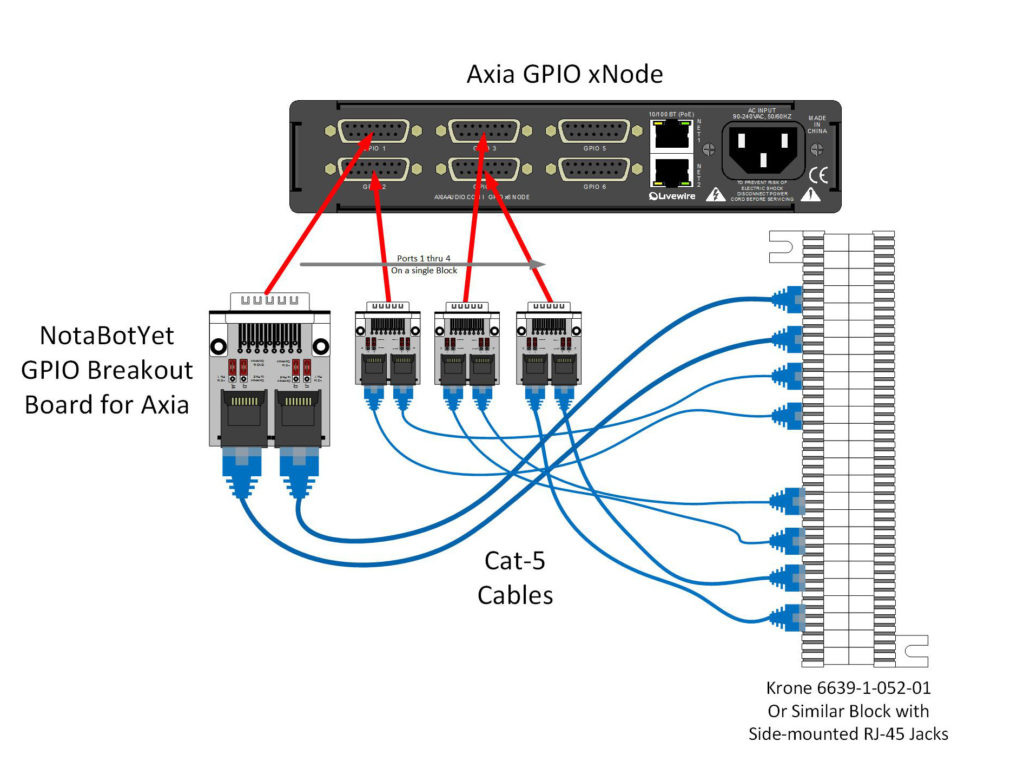Time is definitely money in the world of broadcast and audiovisual installations. If enough time spent on mundane tasks such as soldering can be saved, energies of skilled individuals can be focused on other areas of importance.
Everyone has their own way of doing things and their own style of engineering and, for some, that still includes the use of punch blocks. In the past, to get Axia GPIO signals broken out to a punch block, that meant first finding a decent size flexible and punchable 15 conductor wire to use. Then the wire would be cut to length and each conductor soldered to all 15 pins of the d-sub connector. This process was repeated for every GPIO port required. Finally, all these 15 conductor cables would be punched down to the punch block of choice. The process for one of these cables alone could take a couple of hours per block. Multiply that by any number of blocks and a day/week/month of man-hours can be consumed very quickly.
Whether Krone, 66, or 110 blocks, most manufacturers make a block that has RJ45 jacks pre-wired to one side of the block such as the Krone 6639-1-052-01. This block combined with a NotaBotYet Breakout Board for Axia GPIO can make quick and easy work of terminating all the GPIO pins from an xNode, QOR, or Powerstation on to a punch block. Three GPIO Ports (enough to fill a 50 pin block) could be terminated to the Krone block in a matter of minutes using prefabricated RJ45 patch cables.

